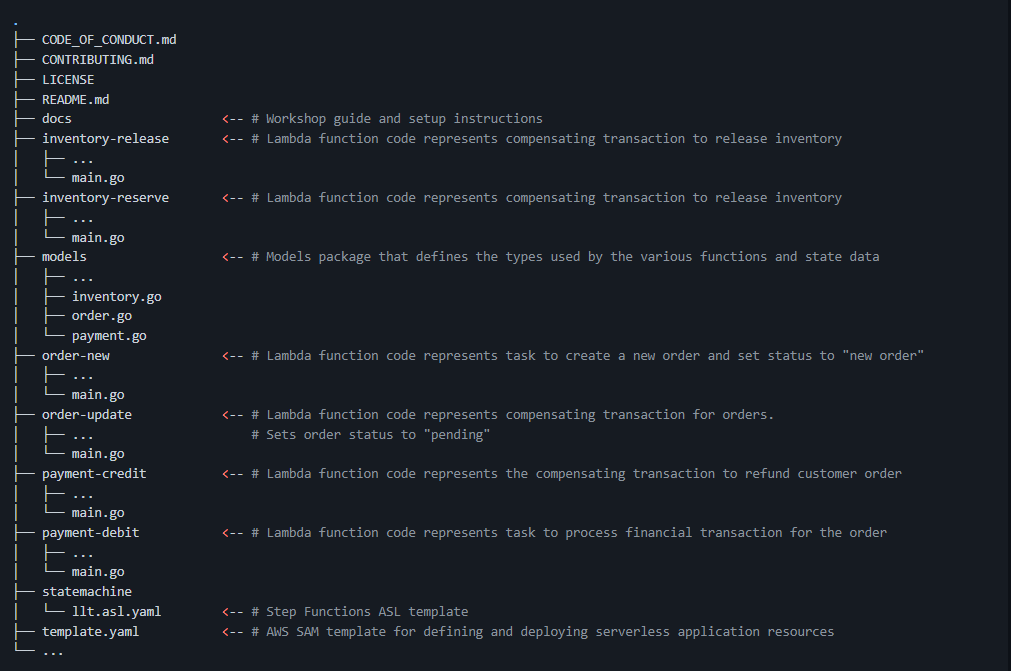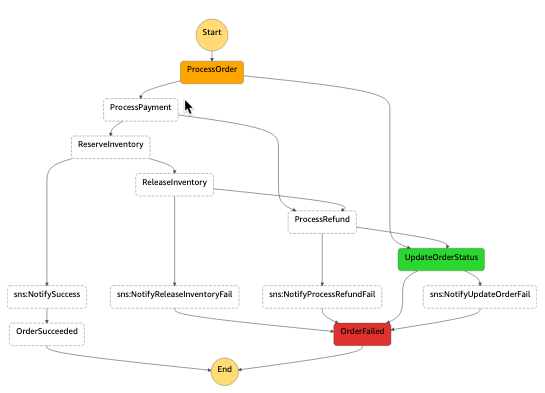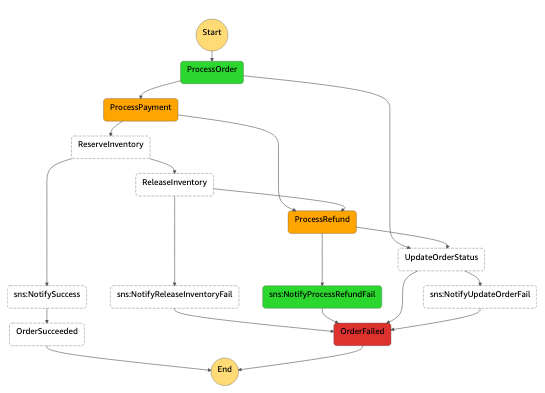Managing Long-Lived Transactions with AWS Step Functions
-
AWS Step Functions is a fully managed Serverless workflow management service for managing long running processes and coordinating the components of distributed applications and microservices using visual workflows.
It can help deal with the complexities of dealing with a long lived transaction across distributed components in amicroservices architecture
-
When building cloud-based distributed architectures, one of the questions we need to ask ourselves is how do we maintain data consistency across microservices that have their own database / persistence mechanism?
We do not have support for Distributed Transaction Coordinators (DTC) or two-phase commit protocols responsible for coordinating transactions across multiple cloud resources.
We need a mechanism coordinate multiple local transactions.
What is the
-
A Saga is a design pattern for dealing with “long-lived transactions” (LLT), published by Garcia-Molina and Salem in 1987.
“LLT is a saga if it can be written as a sequence of transactions that can be interleaved with other transactions.” (Garcia-Molina, Salem 1987)
Fundamentally it is a failure management pattern, that provides us the means to establish semantic consistency in our distributed applications by providing compensating transactions for every transaction where you have more than one collaborating services or functions.
-
AWS Step Functions provide us with a mechanism for dealing with long-lived transactions, by providing us with the ability to build fully managed state machines that:
Coordinate the components of distributed applications and microservices
Allowing us to build our state machines using visual workflows
Provides us with a way to manage state and deal with failure-
The scenario
“You are creating an e-commerce application and are processing an order. This requires you to update order status, process a credit card transaction and update inventory levels. Each state integrates with a different backend with its own local transaction. You need to treat these as a single, distributed transaction.”

This is a sample template for Managing Long Lived Transactions with AWS Step Functions

The Task State (identified by "Type":"Task") causes the interpreter to execute the work identified by the state's “Resource” field.

Any state can encounter runtime errors. Errors can arise because of state machine definition issues (e.g. the “ResultPath” problem discussed immediately above), task failures (e.g. an exception thrown by a Lambda function) or because of transient issues, such as network partition events.

ErrProcessOrder

ErrUpdateOrderStatus


ErrProcessRefund

ErrReleaseInventory

No error :)

